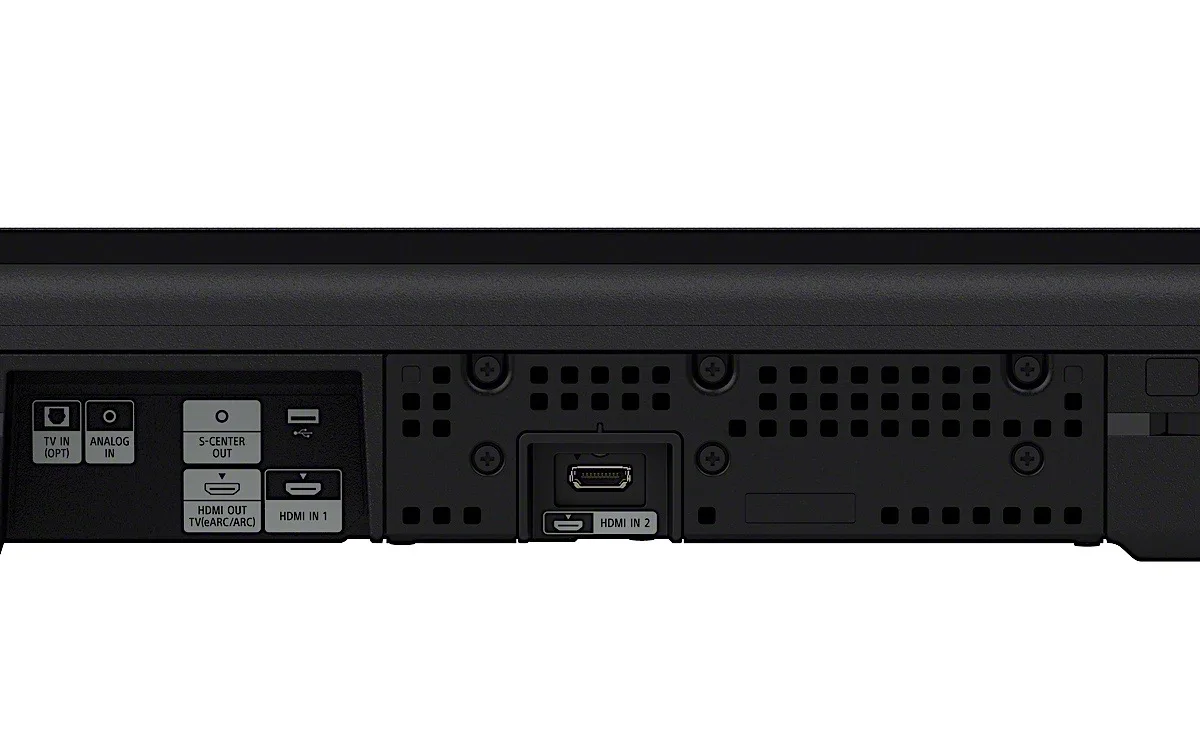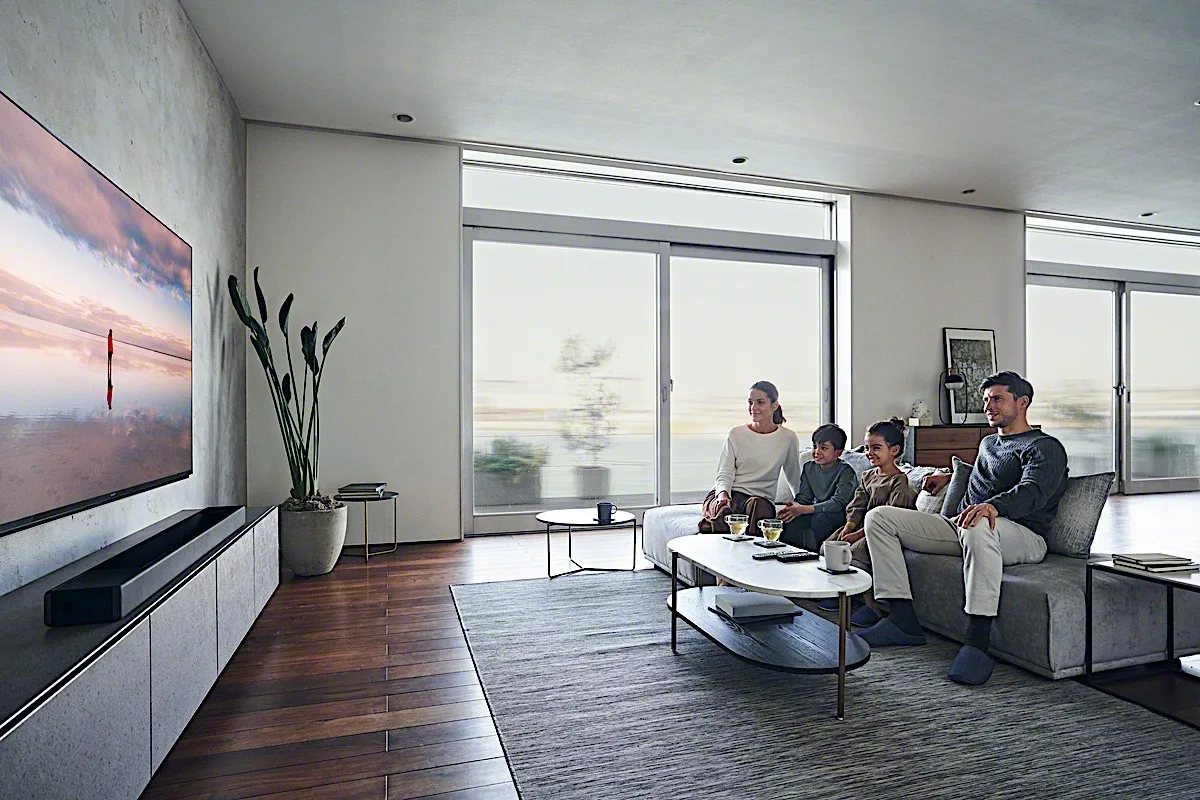The best soundbars for 2023
It’s no secret that the built-in speakers in most TVs are trash. They don’t project enough sound out to the front so you can hear well — especially subtle details. Thankfully, you don’t have to splurge for a five-speaker (or more) surround-sound setup to fix the problem. In most living rooms, a single soundbar and maybe a subwoofer will suffice. To help guide your shopping spree, we’ve compiled a list of everything to look for when searching for the best soundbar for you, along with a list of the top picks for a range of budgets.
-
Best premium soundbar
Sony HT-A7000
$1198 -
Runner-up premium soundbar
Sonos Arc
$899 -
Another premium option
Bowers & Wilkins Panorama 3
$700.35 -
Best midrange soundbar
Sonos Beam
$449 -
Runner-up midrange soundbar
Samsung HW-Q700B
$597.99 -
Another midrange option
Sonos Ray
$279 -
Best budget soundbar
VIZIO V21t-J8 2.1
$159.99
What to look for in a soundbar
Features
When it comes to features, the more you pay the more you’re going to get. Most affordable options ($150 or less) will improve your television’s audio, but that’s about it. Step into the $300 to $400 range and you’ll find things like built-in voice control, wireless connectivity, Chromecast, AirPlay 2 and even Android TV. They’re all helpful when you want to avoid looking for the remote, but the best audio quality is usually only in the top tier and the formats those premium devices support. I’m talking about things like Dolby Atmos, DTS:X and other high-resolution audio standards. These are what you’ll want to look for if truly immersive sound is what you crave for your living room setup. And not all Atmos soundbars are equal, so you’ll need to look at the finer details carefully before you break into the savings account.
Ports

This is a big one. A lot of the more affordable soundbars have limited options when it comes to connectivity. They either offer an optical port or one HDMI jack and, if you’re lucky, both. Things get slightly better in the mid-range section, but that’s not always the case. The Sonos Beam, for example, is $449, but only has a single HDMI port. If you want to connect your set-top box, gaming console and more directly to your soundbar for the best possible audio, you’ll likely want to look for an option with at least two HDMI (eARC) inputs. HDMI connections are essential for things like Dolby Atmos, DTS:X and other high-res and immersive audio formats. And with the HDMI 2.1 spec, soundbars can support HDR, 8K and 4K/120 passthrough to make these speakers an even better companion for a game console.
Channels
Another big thing you’ll want to pay attention to is channels. That’s the 2.1, 7.1.2 or other decimal number that companies include in product descriptions. The first figure corresponds to the number of channels. A two would just be left and right while a more robust Atmos system, especially one with rear satellite speakers, could be five or seven (left, right, center and upward). The second number refers to the subwoofer, so if your soundbar comes with one or has them built in, you’ll see a one here. The third numeral is up-firing speakers, important for the immersive effect of Dolby Atmos. Not all Atmos-enabled units have them, but if they do, the third number will tell you how many are in play.
Wireless

Most soundbars these days offer either Bluetooth, WiFi or both. When it comes to WiFi, that connectivity affords you luxuries like voice control (either built-in or with a separate device), Chromecast, Spotify Connect and AirPlay 2. Depending on your preferences, you might be able to live without some of these. For me, AirPlay 2 and Chromecast are essentials, but the rest I can live without. Those two give me the ability to beam music and podcasts from my go-to apps without having to settle for — or struggle with — a Bluetooth connection.
Size
This one might seem obvious but humor me for a minute. Nothing is more soul-crushing than getting a pricey soundbar in your living room only to discover you have to rearrange everything to find a spot for it. This was my plight when the Sennheiser Ambeo Soundbar arrived at my door. Yes, that speaker is absurdly large (and heavy), and most soundbars aren’t nearly as big. I learned a valuable lesson: Make sure the space where you want to put a soundbar will accommodate the thing you’re about to spend hundreds (if not thousands) of dollars on.
Basically, it all comes down to the TV you have (or are planning to get) and what the primary goal is for your living-room audio. Is it ease of use? Do you want the best possible sound from a single speaker or speaker/sub combo? Do you just want to be able to actually hear your TV better? Or do you want to turn your living room into an immersive home theater with surround sound?
By paying attention to each of those areas, you should have a good idea of what to look for in a soundbar, soundbar/sub combo or a more robust setup. With that said, we’ve put numerous products through their paces at Engadget and have a few favorites for best soundbar at various price points to get you started.
Best premium soundbar: Sony HT-A7000
Sony has a long track record of excellent high-end soundbars and its latest is another great-sounding product. The A7000 is a robust Dolby Atmos soundbar, capable of immersive 7.1.2 audio thanks to Sony’s 360 Sound Mapping, Sound Field Optimization, vertical surround technology and S-Force Pro front surround. There’s a lot of tech at work here, and I haven’t even mentioned 360 Reality Audio or DSEE Extreme upscaling, both handy when it comes to listening to music. Speaking of audio, you’ll have the option of using Chromecast, Spotify Connect or AirPlay 2 to send your tunes to the A7000.
Two HDMI eARC inputs mean you can hook up multiple streaming boxes or gaming consoles. And thanks to HDMI 2.1 support, you can expect 8K and 4K/120 passthrough to your television, so the A7000 is a great option for gamers. This soundbar is expensive at $1,198 and it doesn’t come with a separate subwoofer (though it does have one built in). However, Sony does give you multiple options for both a sub and rear satellite speakers. The SA-SW3 sub is $298 while the SA-SW5 is $699. For rear speakers, the SA-RS3S is $350 while the truly wireless (and much better looking) SA-RS5 set is $598. If you’re looking to save some money on the soundbar itself, Sony offers the HT-A5000 for $999 (although we’ve seen it on sale for $798 recently). It packs nearly all of the same bells and whistles as the A7000, only in a 5.1.2-channel configuration.
Runner-up premium soundbar: Sonos Arc
The top end of Sonos’ home theater lineup was well overdue for a refresh by the time the company introduced the Arc in 2020. This unit replaced the Playbar that debuted in 2013, offering directional sound via Dolby Atmos as the main upgrade. The Arc sports a more modern design, stellar sound and all of Sonos’ smarts – including the ability to automatically calibrate to your living room and when you add more speakers.
The $899 price doesn’t include a sub, but the Playbar didn’t come with one either. And sadly, Sonos doesn’t include a second HDMI jack for directly connecting devices other than your TV. As is typically the case with the company’s wares, expansion gets expensive quickly as the wireless sub is $749 and satellite One speakers are $219 each. However, the combination of the Arc and a sub will get you pretty far sound-wise, even if they are separate purchases. Plus, the smaller and more affordable Sub Mini works well with the company’s most premium soundbar, and it clocks in at $429.
Another premium option: Bowers & Wilkins Panorama 3
Bowers & Wilkins introduced its first Dolby Atmos soundbar back in March, filling a void in the company’s existing home theater lineup. The Panorama 3 has a 3.1.2-channel configuration, but it packs 13 total speakers – including two subwoofers – and 400 watts of sonic power. For that reason, the company doesn’t think you’ll need a dedicated sub. Indeed, the Panorama 3 does offer ample bass, but it’s not nearly on the level as a standalone unit. This soundbar does have a low-profile, refined design alongside voice capabilities, “hidden until lit” touch controls and support for aptX Adaptive, AirPlay 2 and Spotify Connect. Most importantly, it’s currently available for $200 less than the original MSRP at $799.
Best midrange soundbar: Sonos Beam
Solid sound quality? Check. Dolby Atmos? Yep. Compact and easy to set up? Uh huh. Compatible with other Sonos products for a more robust system? You betcha. The first-gen Sonos Beam has been one of our favorites since it arrived in 2018, but there was one thing it didn’t have: Dolby Atmos. That was the big addition to the 2021 model, though it’s a bit limited since the Beam doesn’t have any upward-firing speakers. Sonos manages to make things seem more directional by tweaking audio timing and frequency instead of adding more drivers. The new Beam still only has the one HDMI port which means you won’t be connecting a gaming console or set-top box directly to this. It also means that if you have an older TV with an optical jack, you’ll need an adapter.
Runner-up midrange soundbar: Samsung HW-Q700B
Samsung’s mid-range Q700B will cost you $700, but it comes with a bundled subwoofer. This model also supports wireless Dolby Atmos connectivity with the latest Samsung smart TVs over WiFi and the 3.1.2-channel configuration includes up-firing speakers for proper immersive sound. The Q700B supports Q-Symphony which allows you to use both the soundbar and your TV speakers for a more robust setup on some 2021 and 2022 Samsung TVs. SpaceFit Sound automatically calibrates the soundbar/sub combo to a room, Adaptive Sound optimizes audio for specific content types and Tap Sound allows you to send tunes from a Samsung phone to the Q700B with a simple tap. HDMI eARC connectivity is here as well, and so is voice control, AirPlay, Chromecast and a gaming-specific audio mode.
Another midrange option: Sonos Ray
Sonos’ latest soundbar may be its most affordable to date, but at $279, it’s not exactly a budget pick. Especially when you consider there are cheaper options that come with a subwoofer. Still, the compact design doesn’t command a lot of space in front of your TV, making it a great option for smaller living spaces. The Ray is easy to set up and provides great sound quality for both TV and music. There are some trade-offs when it comes to the immersive nature of the audio, but it’s a good option for upgrading your TV sound with minimal fuss.
Best budget soundbar: Vizio V21t-J8
If you’re looking for a way to improve your TV sound on a budget, Vizio has some solid options. With the V21t-J8, you get a 2.1-channel setup in a compact soundbar and 4.5-inch wireless sub combo for $160. This would be a great choice if you don’t want your add-on TV speaker to take up a lot of space. There’s no WiFi connectivity, but that’s really the only sacrifice when it comes to the basics. HDMI ARC/eARC and optical connections link to your television while a 3.5mm aux jack and Bluetooth allow you to play music from your phone or another device. DTS Virtual:X compatibility offers some of the effect of surround sound without a bigger unit or additional speakers.
